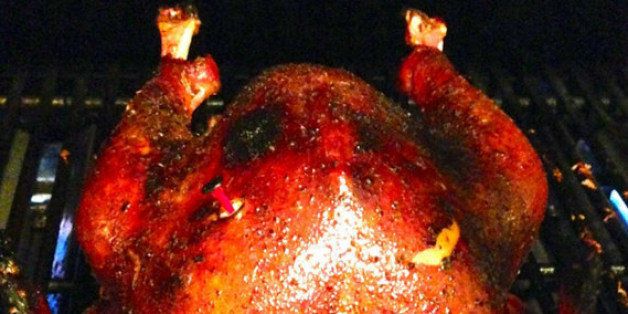
Over the years, I've cooked a lot of turkey. In France, where I stuffed butter and truffles under the skin. In Montreal, where I marinated it with maple syrup and Canadian whiskey. Thanksgiving is fast approaching, and this year I'll be cooking my bird as I usually do these days--outdoors in my kettle grill. The advantages are many. The smoke adds an amazing depth of flavor, while the brine keeps the bird tender and succulent. The process takes the cooking outdoors, freeing up valuable real estate in your kitchen. And you get an excuse to bond with your buddies around the grill.
But not all turkeys are equal. Here's what you need to know to take your Thanksgiving turkey over the top.
- There's a big difference in texture and taste between ice-hard frozen supermarket turkeys and fresh organic birds from your natural foods store or farmers' market. The organic bird may seem a little tougher, but you can't beat the flavor--or the knowledge that it's free of hormones and chemical additives. You'll need to order it ahead, so don't wait until the last minute.
Want six more invaluable tips for nailing the ultimate turkey, plus a killer recipe for bourbon-brined, maple wood-smoked turkey? Head to BarbecueBible.com.
Adapted from Man Made Meals by Steven Raichlen (Workman Publishing).
SIGN UP for Steven Raichlen's UP IN SMOKE newsletter to learn more about barbecue!
--
Steven Raichlen is the author of the Barbecue! Bible cookbook series and the host of Primal Grill on PBS. His web site is BarbecueBible.com.